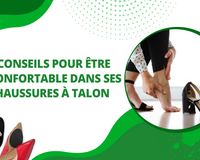Morton syndrome is a painful foot condition that occurs when the nerve running between two metatarsal bones is compressed. This can cause acute pain around the toes and midfoot, as well as swelling and swelling. So, in order to treat morton neuroma, visits shoes for Morton's neuroma are designed to reduce pressure on the compressed nerve and relieve pain.
However, other medical remedies such as corticosteroid injections, orthotic prescriptions and osteopathic sessions are also generally effective in the long term. However, Morton's Neuroma treatment may force a patient to undergo surgery if none of the treatments below has worked, and this could lead to decompress or completely remove the inflamed nerve.
Definition of morton's neuroma

Also known as Morton's disease or syndrome, Morton's neuroma is a painful condition that develops when the nerves between the toes are pressed and inflamed. Symptoms of Morton's neuroma include pain in the toes, tingling and numbness.
This syndrome can affect both feet, and is most often caused by ill-fitting or too-tight footwear, and even a excessive pressure in the intermetatarsal space between the second and third toes.
The causes of morton neuroma: good to know!

Morton's neuroma is a frequent cause of pain in the forefoot, and this syndrome manifests itself as pain under the heel or in the forefoot, which can generally be very uncomfortable.
So what causes this condition? There are a number of factors that can contribute to the onset of Morton's neuroma. The main causes are :
- Foot morphology (mainly flat feet)
- Poor posture: over time, poor posture can lead to excessive pressure on the nerve between the metatarsal bones, which can cause Morton's neuroma.
- Too-tight shoes: Shoes that are too tight are also likely to contribute to the development of Morton's neuroma, as they exert excessive pressure on the nerve.
- Abnormal foot structure: Certain structural problems of the foot can also be the cause of Morton's neuroma. These include problems such as flat foot or claw toes, hallux valgus or hammertoe.
- Excessive physical activity: Excessive physical activity can also be a major cause of Morton's neuroma, as it can also cause excessive pressure on the nerve.
Morton's neuroma: risk factors

Known as a painful disorder that most often occurs in the second and third toes, Morton's neuroma can be very painful and can occur as a result of injury or other factors.
However, if you suffer from Morton's neuroma, it's important for you to understand the signs and symptoms. different risk factors so you can prevent it or treat it properly. Here are some of the main risk factors for Morton's neuroma:
- Excess weight.
- Excessive participation in sports such as running or high jumping, which promotes compression of the interdigital nerve.
- Wearing narrow shoes, high heels or models not adapted to the foot's morphology. Over time, these models compress the intermetatarsal nerve, rubbing against the metatarsal bones and causing inflammation.
How is morton's nevroma treated?

Can morton's neuroma be resolved? ? The answer is yes! In fact, Morton's neuroma can be quite painful, but there are several types of treatment for Morton's neuroma that can eliminate the intense pain caused by this pathology.
For example, there are natural treatments involving the use of orthopedic insertsThese include the use of orthopedic insoles, morton's neuroma shoes, footbaths, etc... medical treatments, as well as surgery, which is generally performed when other treatments have failed.
Morton's neuroma natural treatment
For a natural treatment of Morton's neuroma, the use of orthopedic insoles and shoes for Morton's neuroma is most recommended. However, reflexology and osteopathy can also help relieve Morton's neuroma symptoms.
Orthopedic insoles: an essential solution
Custom-made orthopedic insoles can be used to relieve the discomfort and pain associated with Morton's disease. They are designed to reduce pressure on the metatarsal heads, absorb shock and redistribute body weight across the foot. As a result, a custom morton nevrome insole is available in a variety of materials and sizes to suit every individual.
Custom shoes or shoes for Morton's neuroma: the ideal solution for Morton's neuroma

When it comes to footwear, it's a good idea to choose shoes that not only fit well, but also offer adequate support. For this, you can opt for shoes with sufficient width and soft soles that offer good shock absorption.
However, avoid high-heeled or tight-fitting shoes, as they can aggravate Morton's neuroma symptoms by compressing the front of the foot, which can lead to inflammation of the inter-digital sensory nerves and require surgery.
Local treatment of Morton's neuroma pain
Pain caused by Morton's disease can also be relieved locally. For this, you can :
- Apply a cold compress or ice pack directly to the painful area to relieve pain and inflammation. As a little tip, repeat the operation at least three times a day, at 10-minute intervals.
- Apply arnica gel for optimum effectiveness. Apply a small amount to the painful area, wrap your foot in cling film and leave it on overnight.
- Apply clay poultices. This involves wrapping your foot in a bandage after coating the painful area with clay. Remember to renew the clay poultice every night for two weeks.
Warm water footbaths can also help relax the affected area and relieve the pain and discomfort caused by Morton's neuroma. You can also add essential oils of rosemary camphor, cypress, wintergreen and juniper to the water, which can help reduce inflammation and relieve pain.
Using natural plants
Certain natural plants can be beneficial in relieving the inflammation and pain associated with Morton's neuroma. For example, for about two months, take a course of devil's claw, which can be combined with meadowsweet, dandelion or horsetail for greater effectiveness.
Turmeric also has anti-inflammatory properties. You can use it in the form of a dosed extract, or add pepper.
Nevrome de morton acupuncture treatmentAs well as insoles and shoes for Morton's neuroma, there are several other techniques that can be used to overcome Morton's syndrome. Indeed, many patients are generally successful in acupuncture treatment of Morton's neuroma.
This particular type of treatment involves placing needles around the neuroma, then using heat to increase blood circulation and dilate the foot tissues.
Morton's neuroma laser treatmentFor patients undergoing this type of treatment for Morton's neuroma, it's quite special in that, during the treatment session, to reach the deep tissues at the origin of the intense pain, the rays penetrate beneath the epidermis.
The rays are then absorbed by melanin and hemoglobin, generating heat that spreads and instantly soothes the pain caused by Morton's Neuroma.
Morton's neuroma homeopathic treatment
Unlike the other Morton's neuroma treatment techniques mentioned above, homeopathic treatment is fairly straightforward, involving the use of arnica gel. For optimum effectiveness, simply apply a small amount to the Morton's neuroma, wrap your foot in cling film and leave the treatment to work overnight.
Who to consult for Morton's syndrome?
If the symptoms of Morton's neuroma do not improve, you can contact healthcare professionals who can help relieve these symptoms. For further information, please consult :
- An acupuncturist.
- A reflexologistwho, through a combination of massage and acupressure, can help you by decompressing the nerve and promoting venous return.
- A physiotherapistwho, with the help of precise exercises, can help you strengthen your muscles and relax your feet.
- An osteopathe to relax plantar ligaments and joints. In fact, an osteopath can also help you restore the balance of your weight-bearing points on the ground by acting on your whole body.
Exercises for Morton's neuroma: what not to do
Certain sports, such as running, dancing or prolonged walking, can aggravate the symptoms of Morton's neuroma, as they involve repeated impact of your feet on the ground, thus promoting the onset and aggravation of Morton's neuroma. So avoid them if you suffer from Morton's neuroma ❌.
Medical treatment of Morton's neuroma
How can Morton's neuroma be treated medically? In fact, if the previous treatments are not enough to cure Morton's neuroma, to relieve the pain and inflammation, your doctor may prescribe :
- Corticosteroid injections to reduce nerve inflammation.
- Custom-made orthopedic insoles to free the compressed nerve by increasing the distance between the metatarsal bones.
- Reflexology or osteopathy sessions to relax ligaments and nerves.
- Morton's neuroma shoe specials
Surgical treatment of Morton's neuroma

As mentioned at the beginning of this article, surgical treatment may be necessary following failure of the above-mentioned therapies. However, the operation is performed on an outpatient basis, under locoregional anesthesia.
So, to answer the question of whether Morton's neuroma can grow, Morton's neuroma surgery may involve total removal of the inflamed part of the ligament, if the neuroma is old or has grown significantly.
However, one of the major complications of Morton's neuroma surgery is that it usually results in a total loss of sensation in the toes located near the affected ligament.
But more often, when the neuroma is smaller, percutaneous surgery can decompress the nerve without removing it completely.
Morton's neuroma diet
In order to limit irritation or inflammation of the nerve, leading to the appearance or development of Morton's Neuroma, you can opt for an anti-inflammatory diet, starting, for example, with a course of turmericThe benefits of turmeric for general health are well known.
Convalescence after Morton's neuroma surgery: what you need to know
After surgery, the use of postoperative Morton's neuroma shoes is essential., is then prescribed until the wound has healed properly, in order to continue convalescence.
Is Morton's neuroma a cancer? Frequently asked question

For many people troubled by this question, Morton's neuroma is not cancer.given that the factors leading to the formation of the neuroma neuroma are purely mechanical, and there is no risk of degeneration into cancer, even at a later stage.
In short, Morton's neuroma is a very common and painful condition that can affect the toes and feet. Although it is generally benign and requires no treatment, it can cause a great deal of pain and discomfort.
Fortunately, there are very simple and safe methods of relieving Morton's neuroma, including the use of custom-made orthopedic insoles, the wearing of suitable footwear, foot baths with warm water, the use of herbal remedies, stretching and strengthening exercises and the use of medication to relieve inflammation and pain.
So, if you are suffering from symptoms of Morton's neuroma, you should consult your doctor or podiatrist for a full diagnosis and advice on the most appropriate treatment.









